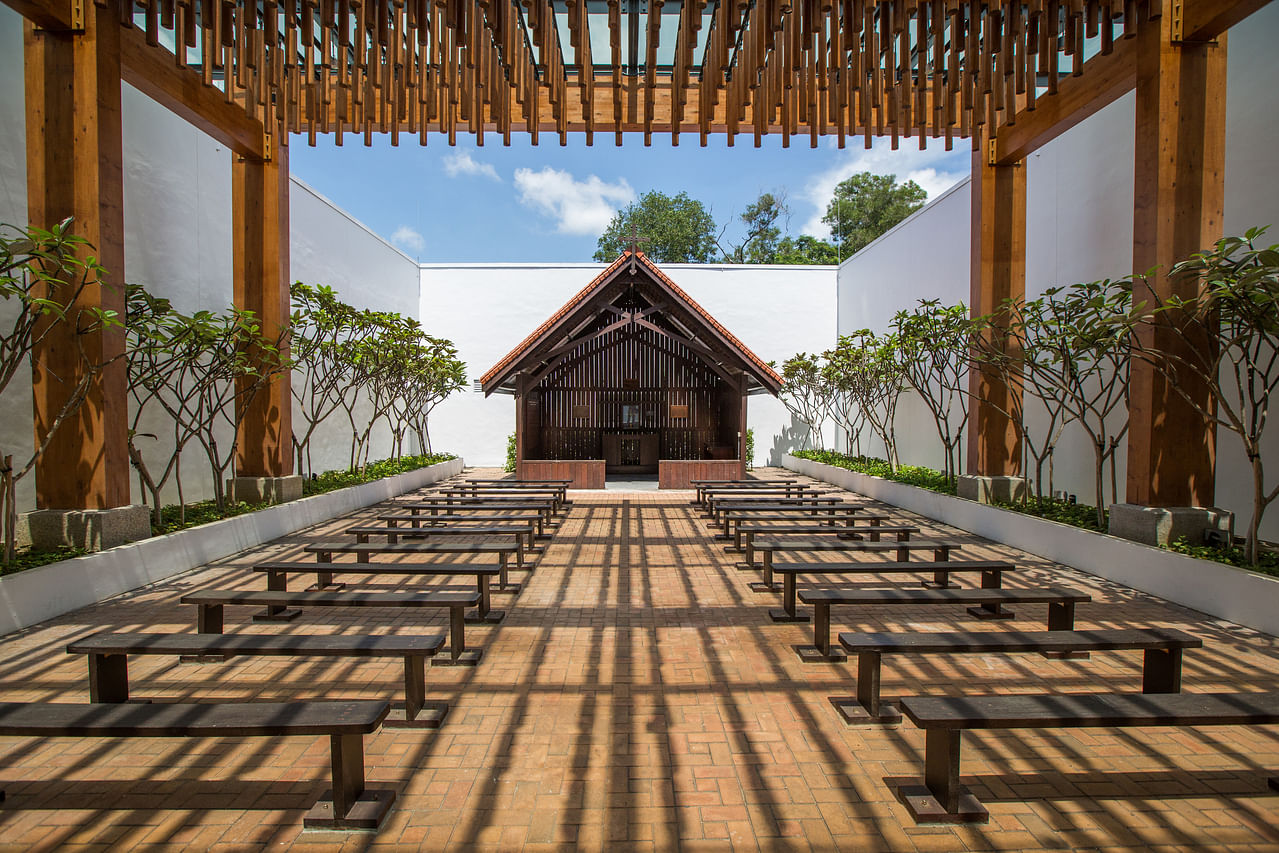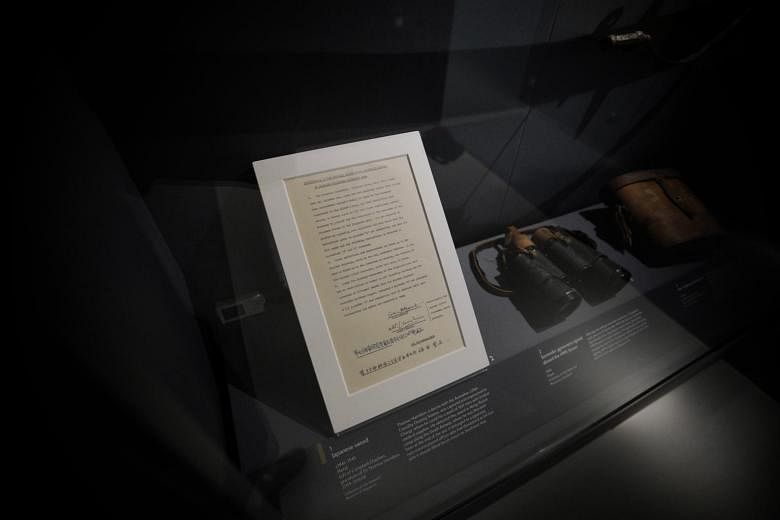SINGAPORE - A World War II surrender document previously thought lost was discovered in the depths of Scotland's national collection by a Singapore curator and is being displayed at the recently reopened Changi Chapel and Museum (CCM).
The Japanese surrender agreement, signed aboard the HMS Sussex at Keppel Harbour on Sept 4, 1945, effectively marked the end of the Japanese Occupation in Singapore and Malaya.
It was thought to have been lost in the chaotic last days of the war, but will be displayed here from this month on a six-month loan from National Museums Scotland. It is a timely addition as Singapore commemorates the unconditional surrender of the Japanese forces to the Allied Powers 76 years ago, on Sept 12, 1945.
CCM, which reopened in May, said on Friday (Sept 10) that the "chance discovery" was made by Ms Rachel Eng, 26, an assistant curator at the National Museum of Singapore.
The young curator was conducting research on Singapore's history when she came across the donation to the Scotland collection.
"The original documents were often said to be challenging to locate and only copies of the various texts could be found," CCM said.
"This discovery is a testament to the research that curators undertake when piecing together Singapore's history."
Ms Eng said the moment she found the document was "breathtaking".
"I wasn't sure at first if it was the right one because there wasn't a picture attached, but knowing the history, I was definitely intrigued.
"It is an important document in Singapore's war history and one that shaped what came after. I hope people will take the opportunity to visit the museum to see it," she added.
The HMS Sussex surrender agreement is not to be confused with the Instrument of Surrender signed a week later at the Municipal Building, now City Hall, on Sept 12, 1945.
That document, signed by Admiral Lord Louis Mountbatten, then Supreme Allied Commander in South-east Asia, ended the Japanese Occupation in the whole of South-east Asia.

The HMS Sussex document is more specific to Singapore, and outlines a set of instructions to be adhered to during the withdrawal and surrender of the Japanese here and in Malaya.
Eyewitnesses on board the vessel during the signing said prisoners from Changi prison were taken to the ship to be fed after months of starvation.
Within 24 hours of the signing, allied troops had reoccupied Singapore and clocks were set once again to Malayan time. During the Occupation, the clocks were synced with Tokyo.
The surrender of the Japanese, coming after the defeat of the British at the start of the war, would spark off independence movements across the region.
Indonesia declared independence in 1945, although it would be another four years and a fractious war before the Dutch accepted this. Communist Vietnam defeated France in 1954 before fighting off American troops and finally unifying North and South Vietnam in 1975.
Singapore would gain its independence less violently but no less abruptly, after a shock separation from Malaysia in 1965.
The Japanese signatories to the HMS Sussex document were General Seishito Itagaki, later convicted of war crimes and executed, and Vice-Admiral Shigeru Fukidome. The Allied representatives were Rear Admiral Cedric Holland and Lieutenant General Sir Philip Christison.
CCM said the National Museum of Singapore is exploring the possibility of reproducing the surrender document so that it can continue to be displayed after the six-month loan period.
Visitors to the museum should pre-book their admission tickets to ensure entry.
CCM tells the story of the nearly 50,000 prisoners held in Changi during the war years through everyday objects like watches, mess tins, brushes and diaries.
It now has 114 artefacts spread across eight galleries. At its heart is the Changi Chapel and the Changi Cross, made from artillery shells in 1942 to provide spiritual solace to prisoners.


